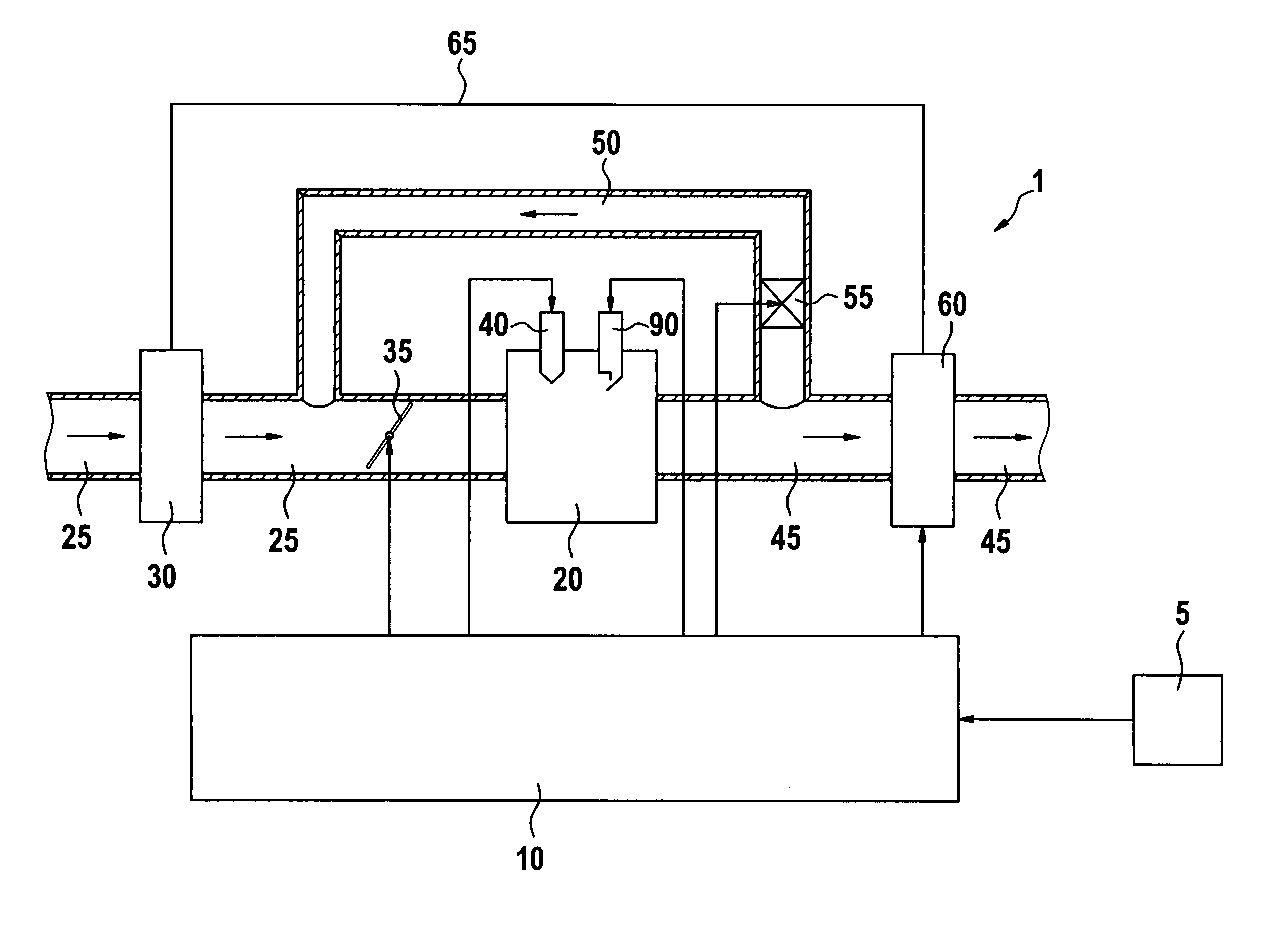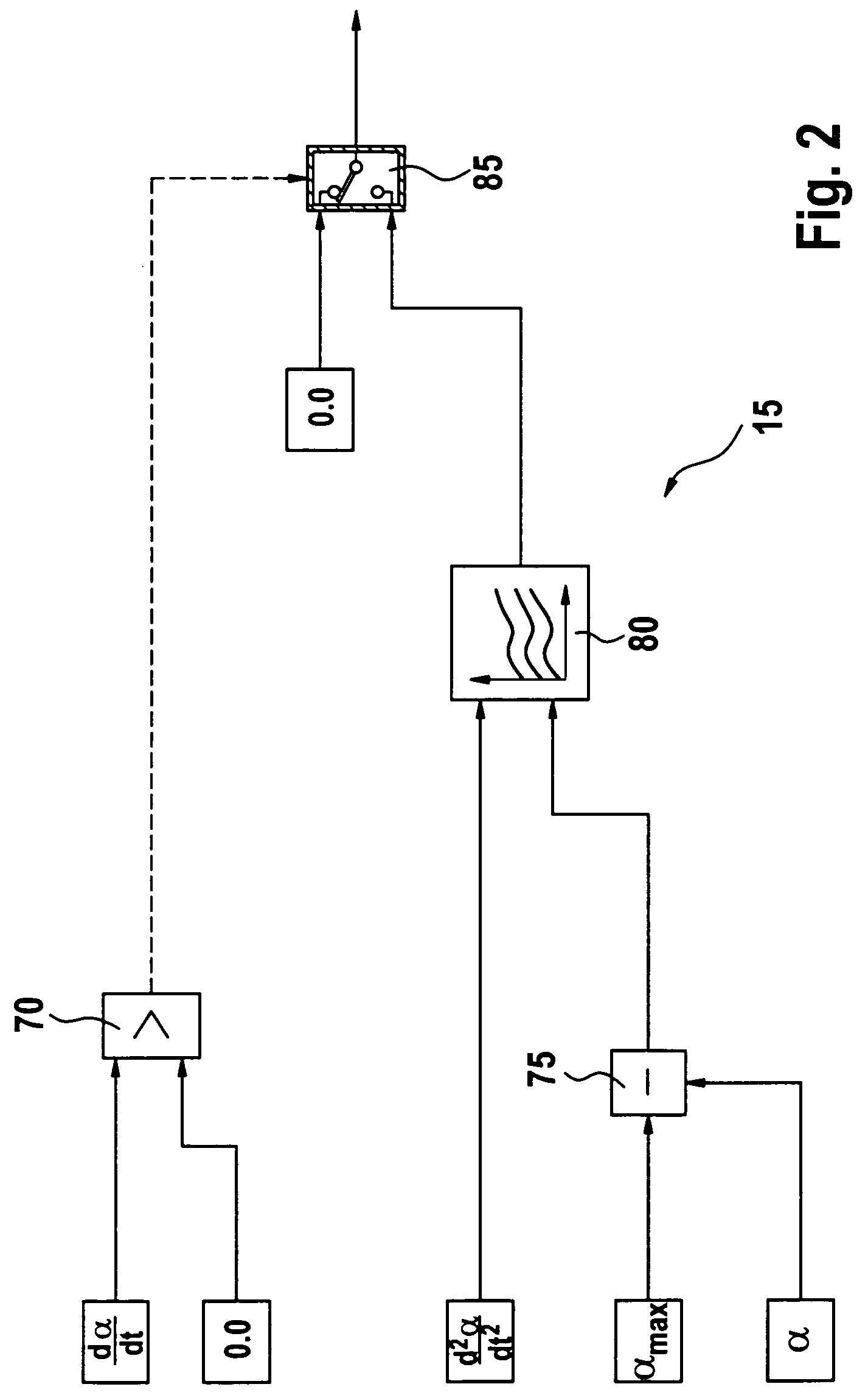Method and device for operating an internal combustion engine of a vehicle
- Summary
- Abstract
- Description
- Claims
- Application Information
AI Technical Summary
Benefits of technology
Problems solved by technology
Method used
Image
Examples
Embodiment Construction
[0013]In FIG. 1, reference numeral 1 designates an engine of a vehicle. Engine 1 includes an internal combustion engine 20. Internal combustion engine 20 may take the form of, e.g. a spark-ignition engine or a diesel engine. In the following, it is assumed, for example, that internal combustion engine 20 takes the form of a spark-ignition engine. Internal combustion engine 20 is supplied with fresh air via an air inlet 25. The flow direction of the fresh air in air inlet 25 is indicated by arrows. In this context, a compressor 30 of, e.g. an exhaust-gas turbocharger, which compresses the supplied fresh air, may be situated in air inlet 25, as shown in FIG. 1. In air inlet 25, a throttle valve 35 for setting the amount of air supplied to a combustion chamber of internal combustion engine 20 not shown in FIG. 1 is positioned downstream from compressor 30 in the flow direction of the fresh air. To that end, the position of throttle valve 35 is controlled by a control unit 10. Fuel is i...
PUM
 Login to View More
Login to View More Abstract
Description
Claims
Application Information
 Login to View More
Login to View More - R&D
- Intellectual Property
- Life Sciences
- Materials
- Tech Scout
- Unparalleled Data Quality
- Higher Quality Content
- 60% Fewer Hallucinations
Browse by: Latest US Patents, China's latest patents, Technical Efficacy Thesaurus, Application Domain, Technology Topic, Popular Technical Reports.
© 2025 PatSnap. All rights reserved.Legal|Privacy policy|Modern Slavery Act Transparency Statement|Sitemap|About US| Contact US: help@patsnap.com



